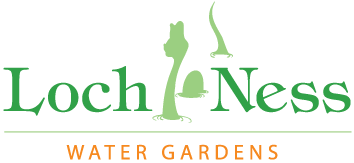Flexible pond liners are very durable, flexible and the best choice for a custom fit. You can lay out the shape using garden hose. Choose the spot thoughtfully…
Location, location, location:
In the world of real estate, those three words rule (of course it’s only one word- but triple important for sure). Landscape features should abide by that golden rule. Select a spot within sight of a patio, deck or other sitting area. Preferably, locate it outside of any large tree canopy. Digging will be easier without cutting into root. Also, fall leaves will land in the pond, if too close.
Avoid slopes and gullies. Sometimes people think that a wash area would be perfect for a pond; possibly rationalizing that it’s often wet, so why not? Think again, because with storm water runoff comes contaminates, including silt and debris that it picks up on route to your pond. When possible, choose a spot that is fairly level. If this is not possible, build a berm up slope to direct water away from the pond.
 On shaping the pond:
On shaping the pond:
Keep the curves to a minimum. Kidney and elliptical shapes are classic. Variations in the edge can be accomplished best by using overhanging stones and plants at the edges. Curvy squiggles in the layout lead to the abstract amoeba look. Beware of the Blob!
It’s a “hole” lot easier if you carve the edges carefully:
Small ponds can be dug out manually, usually without too many trips to the chiropractor. But even if a machine is used for the bulk of the digging, the edges should be manually carved out, leaving it smooth and level all around. An edge cut too deep or un-evenly will never have the same smooth, firm quality when back-filled.
Measure, measure, measure:
To determine how much liner to purchase, measure at the maximum width, length and depth. It is better to estimate generously than end up with too little. Goldfish and Koi prefer at least 3-4 feet of depth, respectively.
Example size is 8 ft. wide x 10 ft. long and 3 ft. deep.
For width calculation,
Pond width + (Pond Depth, at deepest point x2) + 1 foot, for edge overlap
8 ft. + (3 ft. x2) + 1 = 8 ft. + 6 ft. + 1 = 15 ft. width needed
For length calculation:
Pond length + (Pond Depth, at deepest point x2) + 1 foot, for edge overlap
10 ft. + (3 ft. x2) + 1 = 10 ft. + 6 ft. + 1 = 17 ft. length needed
Add another 18 inches to length and width if you want to incorporate an 18 inch wide plant ledge. A good depth for a plant ledge is around 12 inches below the surface.
Underlayment, then liner:
There are other compositions, but EPDM liner is a proven good choice that is flexible and durable. If you lay it out in the sun for a couple of hours first, it will be softer and easier to manipulate during installation.
The base or bottom ground of the pond should be smooth and free of sticks and stones. To make it really nice and soft, add a layer of fine sand then top it with underlayment, the layer of material beneath the waterproof flexible liner. It pads any rough spots that may remain.
Crease the liner at even intervals to minimize bulky folds. Don’t worry about these too much. They will virtually disappear with edge rocks overlapping, pond plants covering and especially with the reflective nature of the water working it’s magic.
Finish the edges after the pond is edged with stones and full of water. Cut with scissors, leaving about 3 inches that may be tucked in around edge stones and disguised by plants and mulch. See “Naturalize Pond Edges” for more tips on finishing touches.![]()
Note – the video below contains more tips, visuals, and plumbing instructions:


